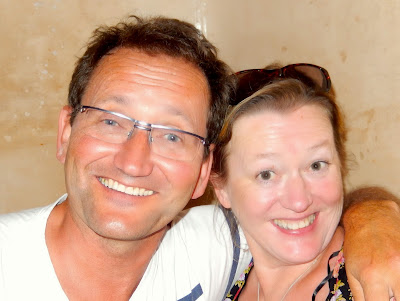Fig. 1 My big sister and me
'Preach to the converted' is the mantra of advertising; increasingly it should the mantra of e-learning. Give potential students what they want in a way that they are already open to. Don't force feed platforms and tools that are foreign to them, nor pander to the book, pen and notebook when by its very nature if you are learning online you are in front of a computer screen. Blended learning is how it is. Increasingly there is no 'e' - it is simply learning in the 21st century.
'Preach to the converted' ties into the need to know who your students are - in all their diversity. There's a bunch of personas used by the Open University to help with this. We're a handful of shifting types across a spectrum of some 12 personas. This helps educators design for hidden, massive audiences.
Fig.2. The Santorini Museum
Big Sis and me both wanted a book from the Santorini Museum.
We'd done the Akrotiri excavation and did the museum in our separate ways (family event on the island with people arriving at different times and staying in different place. When we met up we agreed immediately at the frustration at no having a shop at either location. You whet your appetite on a subject are ripe for a bit more. I even started looking for a two week course on Archaeology in Future Learn. No book. Not much of a website. Ample content with each artefact.
Visitors to museums are converts; not just easy to sell postcards and tea-towels too, but ready to learn and suckers not just for 'the book', but just as prepared to come to the talk, even, these days, to sign up to a taster course.


